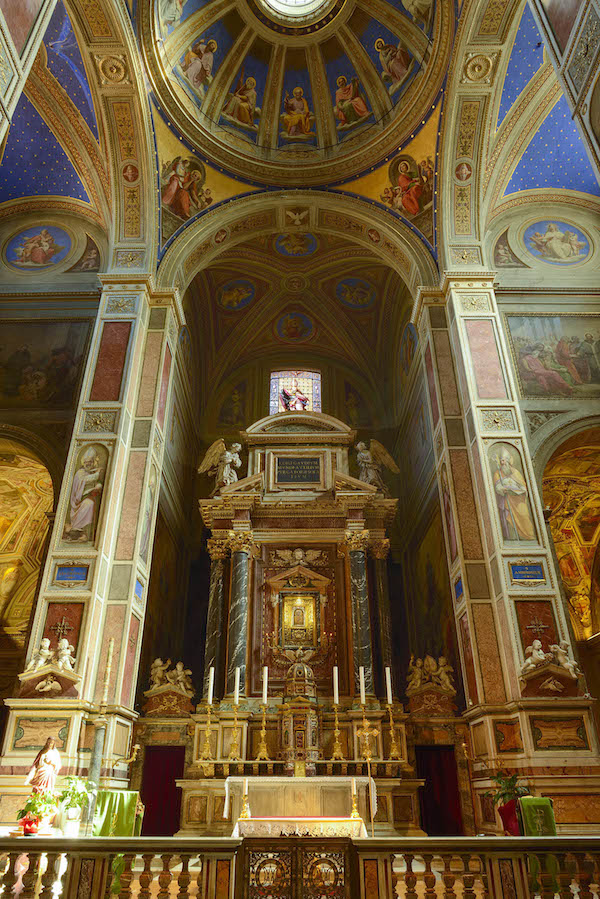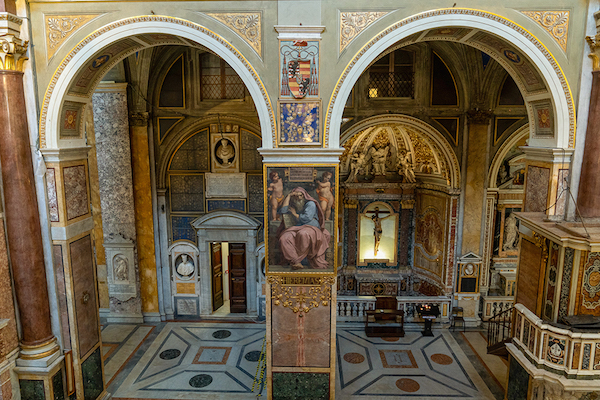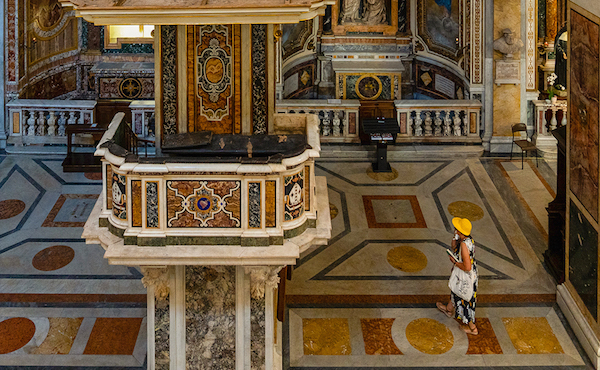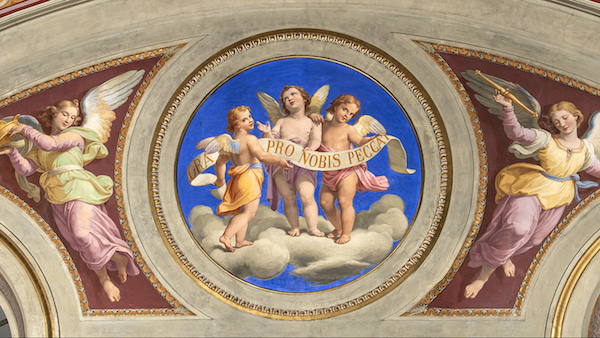Basiiica of Sant’Agostino in Campo Marzio, Rome. Photo Fabio Caricchia I Courtesy of the Special Superintendence of Rome
Interested by a complex restoration over the last eight years, the Basilica will show the fruit of the latest works: the frescoes in the central nave made by the nineteenth-century painter Pietro Gagliardi, recently restored to their ancient splendor. On the walls and on the vault, visitors can admire the monumental cycles of Stories from the life of the Virgin and of Stories and figures from the Old Testament, exceptional for compositional research and chromatic texture. One of these scenes recalls a particular moment in the history of Catholicism: the image of the Immaculate Conception is in fact one of the first paintings made on this theme after the proclamation of the dogma by Pius IX in 1854.

Basiiica of Sant’Agostino in Campo Marzio, the main altar. Photo Fabio Caricchia I Courtesy of the Special Superintendence of Rome
But the beauty enclosed within the walls of Sant’Agostino is much older. “The Basilica is a book of art history, with masterpieces by Raphael, Caravaggio, Jacopo and Andrea Sansovino, Lanfranco, Guercino, Bernini and many others”, explains the Special Superintendent of Rome Daniela Porro. Beyond the facade designed by Leon Battista Alberti Inspired by the Florentine Basilica of Santa Maria Novella, the monument’s rich and layered architecture – three naves and 14 side chapels – houses a superb collection of works of art.

Basiiica of Sant’Agostino in Campo Marzio, Rome. Photo Fabio Caricchia I Courtesy of the Special Superintendence of Rome
On the third pillar on the left of the central nave, for example, we find the fresco by Prophet Isaiah painted by Raphaelwhile in the Chapel of the Madonna di Loreto the canvas of the Madonna of the Pilgrims by Caravaggio. The Chapel of Saints Augustine and William, on the other hand, is adorned with an altarpiece by Guercino (Saint Augustine between Saints John the Baptist and Saint Paul the first hermit) and, looking around us, in the same environment we will recognize the seventeenth-century frescoes by Giovanni Lanfranco depicting the Assumption of the Virgin and the Apostles at her tomb.

Basiiica of Sant’Agostino in Campo Marzio, Rome. Photo Fabio Caricchia I Courtesy of the Special Superintendence of Rome
Sculpture also wants its part in Sant’Agostino: they are of inestimable value Madonna of childbirth from Jacopo Sansovino and the Madonna and Child with Saint Anne by Andrea Sansovinowhile I two angels on the high altar testify to the talent of the young man Gian Lorenzo Bernini.
“For years the Special Superintendence of Rome has been working intensively to restore the Basilica of Sant’Agostino to the community of the faithful and visitors through complex restoration and structural consolidation works also supported by private sponsors”, he says Andrea Mascherucci, the architect responsible for the monument: “This church is an extraordinary palimpsest of art and history. The guided tours will be a moment to share all this with the city, the Romans and visitors ”.
Reservations and information on the initiative are available on the website www.soprintendenzaspecialeroma.it.

Basiiica of Sant’Agostino in Campo Marzio, Rome. Photo Fabio Caricchia I Courtesy of the Special Superintendence of Rome

